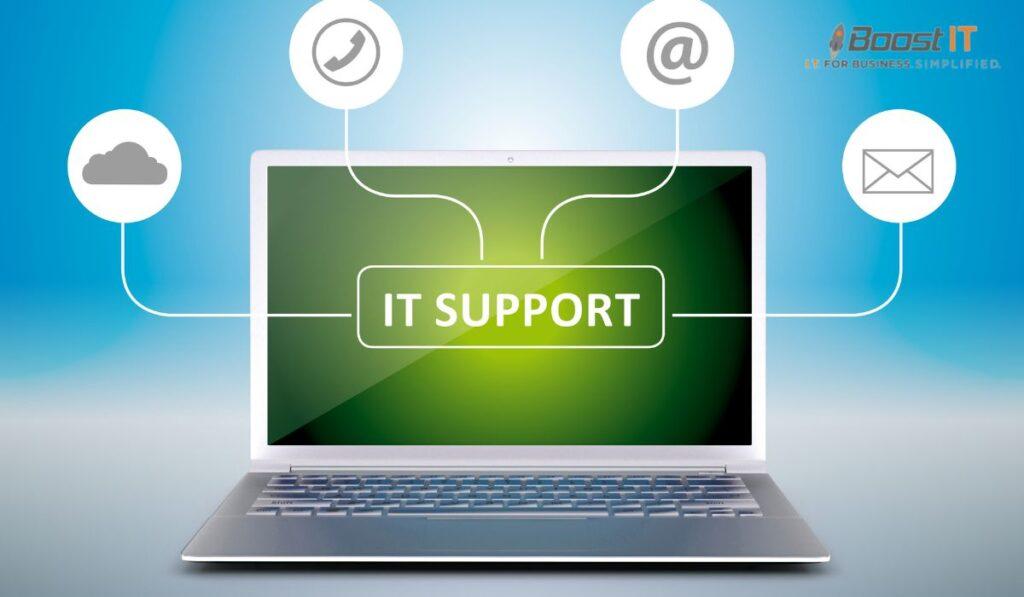
Managed IT services offer numerous benefits for businesses, providing a proactive approach to IT management and support. By outsourcing their IT needs to a trusted managed service provider (MSP), companies can focus on their core operations while enjoying various advantages. Let’s explore the benefits of managed IT services in detail.
Why Choose Managed IT Services For Your Business?
Managed IT services bring several advantages to businesses, including:
- Expertise and Specialization: Managed service providers have a team of highly skillful professionals who specialize in various areas of IT. They possess extensive knowledge and experience to handle complex IT tasks efficiently.
- Cost Savings: Outsourcing IT services can lower the need for in-house IT staff and infrastructure investments. Managed IT services are typically subscription-based, allowing companies to pay for their needed services, resulting in cost savings.
- 24/7 Monitoring and Support: Managed service providers monitor systems round the clock, ensuring early detection and resolution of potential issues. They provide proactive support to minimize downtime and keep business operations running smoothly.
How To Choose The Right Managed Service Provider?
When selecting a managed service provider, consider the following factors:
- Experience and Expertise: Look for an MSP with a proven track record & expertise in your industry. They should have experience managing similar IT environments and addressing your business’s specific needs and challenges.
- Service Level Agreements (SLAs): Ensure the MSP offers comprehensive SLAs that clearly define the scope of services, response times, and performance metrics. SLAs provide transparency and accountability, ensuring your IT needs are met consistently.
- Scalability and Flexibility: Choose an MSP that can scale its services to accommodate your business growth. They should be flexible enough to adapt to your changing needs and provide solutions that align with your long-term goals.
Are Managed IT Services Right for Your Business?
Managed IT services suit businesses of all sizes and across various industries. They provide significant benefits, especially for organizations that:
- Lack of in-house IT expertise or limited IT staff.
- Want to reduce IT infrastructure and operational costs?
- Require round-the-clock monitoring, proactive support, and quick issue resolution.
- Seek to enhance data security and compliance measures.
- Aim to leverage the latest technology advancements to stay competitive.
Contact Us To Learn More About Managed Services Model
If you want to explore the benefits of managed IT services for your business, please get in touch with us. Our experienced team can provide detailed information about how managed services can enhance your IT operations, boost productivity, and contribute to your overall success.
FAQ
How can managed IT services help your business?
Managed IT services can help your business by providing expert IT support, proactive monitoring, and issue resolution. They allow you to offload your IT responsibilities, reduce costs, and ensure the smooth operation of your systems.
What are the advantages of moving to a managed service structure for IT?
Moving to a managed service structure for IT offers advantages such as cost reduction, access to specialized expertise, proactive monitoring, rapid issue resolution, and enhanced security measures.
What is the usage of managed IT services?
Managed IT services are used to outsource IT responsibilities to a third-party provider. They encompass various services, including IT support, network monitoring, data backup, cybersecurity, and cloud solutions.
What are the business benefits of IT support?
IT support provides businesses with timely assistance, issue resolution, and expertise. It ensures the smooth functioning of IT systems, minimizes downtime, and enables employees to focus on their core tasks.
What is the difference between IT services & managed IT services?
While IT services typically refer to a broad range of technology-related services, managed IT services specifically involve outsourcing IT responsibilities to a third-party provider, who assumes proactive monitoring, management, and IT infrastructure support.
What are the most significant benefits of having a managed security service provider?
Enormous benefits of having a managed security service provider include the following:
- Round-the-clock monitoring.
- Advanced threat detection and prevention.
- Timely incident response.
- Compliance assistance.
- Improved overall cybersecurity posture.
Why outsource your IT services?
Outsourcing IT services allows businesses to leverage external expertise, reduce costs, access advanced technologies, ensure continuous support, and focus on their core competencies.
What are the critical components of IT-managed services?
The critical components of IT-managed services include IT support, network monitoring, infrastructure management, data backup and recovery, cybersecurity, cloud solutions, and strategic technology planning.
What is an example of managed IT services?
An example of managed IT services is a managed service provider offering 24/7 help desk support, proactive system monitoring, data backup, network security, and software patch management to businesses.
What is one benefit of using a managed service account?
One benefit of using a managed service account is that it provides a secure and controlled way for applications and services to access network resources without requiring individual user credentials.
What is a fully managed IT service?
A fully managed IT service comprehensively outsources all IT responsibilities to a managed service provider. It includes proactive monitoring, issue resolution, strategic planning, and ongoing support.
How do I choose a managed IT service?
When choosing a managed IT service, consider the provider’s experience, expertise, service offerings, service level agreements, scalability, flexibility, and alignment with your business goals.
What is the best definition of IT service management?
IT service management (ITSM) refers to the set of policies, processes, and activities used to design, plan, deliver, operate, and control IT services within an organization, aiming to meet the needs of the business and its customers.
What are the three pillars of IT service management?
The three pillars of IT service management are people, processes, and technology. These components work together to deliver effective IT services and ensure IT alignment with business objectives.
What are the three pillars of IT services?
The three pillars of IT services are service strategy, service design, and service transition. These pillars define the strategic approach, design considerations, and implementation process for delivering IT services effectively.
What are the five components of an IT system?
The five components of an IT system are hardware, Software, data, people, and processes. These components work together to create a functioning IT environment.
What are three examples of management information systems?
Three examples of management information systems (MIS) are:
- Enterprise resource planning (ERP) systems.
- Customer relationship management (CRM) systems.
- Business intelligence (BI) systems.
Are managed services the same as SaaS?
Managed services & Software as a Service (SaaS) are different. Managed services refer to outsourced IT management and support, while SaaS specifically relates to delivering software applications over the Internet.
What are the other names for managed services?
Other names for managed services include IT outsourcing, IT support services, IT managed solutions, and IT service management.
What are the 4 Ps of IT service management?
The 4 Ps of IT service management are people, processes, products, and partners. These elements are crucial for delivering effective IT services and ensuring customer satisfaction.
What are the four dimensions of IT service management?
The four dimensions of IT service management, as defined in the ITIL 4 framework, are organizations and people, information and technology, partners and suppliers, and value streams and processes. These dimensions provide a holistic view of ITSM implementation.
What are the four perspectives of IT service management?
Based on the Balanced Scorecard approach, the four perspectives of IT service management are financial, customer, internal process, and learning and growth. These perspectives help organizations measure and improve their IT service delivery.
Conclusion
In conclusion, leveraging managed IT services brings numerous benefits to businesses, ranging from cost savings and expertise to 24/7 monitoring and support. By partnering with a reliable managed service provider, companies can offload their IT responsibilities and focus on driving their core objectives. With enhanced efficiency and optimized IT infrastructure, businesses can pave the way for success in today’s technology-driven landscape.


